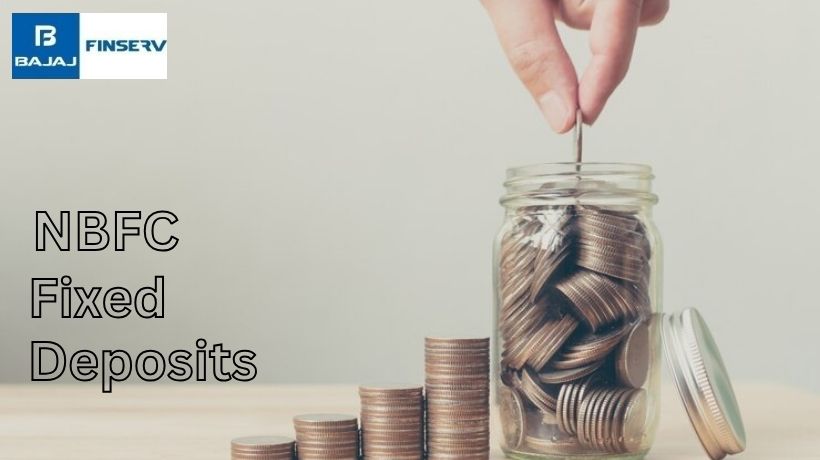Fixed Deposits (FDs) are a popular investment choice among individuals due to their assured returns and safety. While banks have been the primary issuers of FDs, NBFCs have emerged as a reliable alternative.
What Are NBFCs?
NBFCs, or Non-banking Financial Companies, are entities that offer various financial services. However, they do not hold a banking license. An FD issued by an NBFC is an investment product where you deposit a lump sum of money for a fixed tenor at a predetermined interest rate. At the end of the tenor, the principal amount is returned along with the interest earned over the period.
Why Consider NBFC FDs?
Investing in FDs issued by NBFCs could be a favourable option for those seeking higher returns on their savings.
-
Higher Interest Rates
Investors may be drawn to NBFC FDs due to their higher interest rates. This is in comparison to bank-issued FDs. NBFC FD rates are generally more attractive, providing better returns on investments. The higher yield could be particularly beneficial. This can especially be the case for those looking to maximise their savings over a fixed period.
-
Flexibility
NBFCs often provide more flexible terms for their FDs. This includes varied tenors and interest payout options. Investors can choose between cumulative and non-cumulative interest payouts. Non-cumulative FDs cater to those who need regular income. Meanwhile, cumulative FDs may be preferred by individuals who want to compound their returns until maturity.
-
Diversification
Investing in NBFC FDs allows investors to diversify their portfolios. They can spread investments across different issuers. By doing so, one could allocate funds between bank and NBFC FDs to utilise the benefits each option provides.
Current NBFC FD Rates in India
NBFC FD rates in India vary based on the issuer, the tenor, and the amount deposited. As of 7th June 2024, here are some NBFCs that offer competitive rates:
Disclaimer: The above are subject to change. It’s always advisable to check the latest rates directly with the NBFCs.
How to Choose the Right NBFC FD
When considering an NBFC FD, it’s crucial to evaluate various factors. These must align with your financial goals and risk appetite. Here are some you must keep in mind:
-
Interest Rates: Compare the NBFC FD rates offered by different companies. Higher rates could significantly enhance your returns over time. However, it is recommended to ensure they are competitive and sustainable.
-
Credit Rating: Look for NBFCs with high credit ratings from agencies like CRISIL, ICRA, or CARE. A higher rating indicates better financial health and lower risk.
-
Tenor: Choose a tenor that matches your investment horizon. NBFCs offer varied tenors ranging from a few months to several years. Longer tenors typically offer higher interest rates.
-
Liquidity: Check the terms for premature withdrawal. Some NBFCs might offer flexible withdrawal options, while others might impose penalties.
-
Additional Benefits: Look for additional benefits. These include special schemes for senior citizens, auto-renewal options, and online account management.
Pros and Cons of NBFC FDs
Here are some benefits and drawbacks of investing in NBFC FDs:
Pros
-
Assured Returns: NBFC FDs provide guaranteed returns at a fixed interest rate. This helps offer financial stability and predictability, similar to bank-issued FDs.
-
Safety: Choosing NBFCs with high credit ratings may help secure your principal amount.
-
Regular Income: Non-cumulative FDs offer periodic interest payouts. This may be a good source of regular income for retirees or those seeking periodic cash flow.
Cons
-
Credit Risk: NBFCs carry a higher credit risk compared to banks. It’s essential to choose NBFCs with high credit ratings to mitigate this risk.
-
No Insurance: NBFCs are not insured by the Deposit Insurance and Credit Guarantee Corporation (DICGC) like bank-issued FDs.
Steps to Invest in NBFC FDs
Here are some steps you must follow when investing in an NBFC FD:
-
Research: Start by researching various NBFCs and their FD offerings. Compare interest rates, tenors, and credit ratings.
-
Documentation: Gather necessary documents such as identity proof, address proof, and PAN card.
-
Application: Most NBFCs offer both online and offline application processes. Fill out the application form, attach the documents, and choose the desired FD scheme.
-
Deposit Amount: Transfer the investment amount via cheque, demand draft, or online transfer. This is to be done as per the NBFC’s instructions.
-
Receipt and Acknowledgment: The NBFC will then provide an FD receipt. This serves as an acknowledgement, confirming your investment.
Tax Implications of NBFC FDs
The interest earned on NBFC FDs is subject to tax under the Income Tax Act, 1961. The interest income is added to the investor’s total income. It is then taxed according to their applicable income tax slab rates. Additionally, NBFCs deduct TDS if the interest income exceeds ₹40,000 in a financial year. This limit is ₹50,000 for senior citizens. It’s advisable to submit Form 15G or 15H to the NBFC if your total income is below the taxable limit. Doing so can help avoid TDS deductions.
Additional Tips for Investing in NBFC FDs
-
Stagger Your Investments: Instead of locking your funds together, consider staggering your investments. This approach, known as laddering, involves splitting your investment into multiple FDs. These can have different maturity dates. It helps manage liquidity and take advantage of varying interest rates over time.
-
Monitor Interest Rates: Keep an eye on the prevailing FD rates in India. Interest rates can fluctuate based on economic conditions and RBI policies. Investing when rates are high can maximise your returns.
-
Stay Informed: Regularly review the financial health and credit ratings of the NBFC. Stay updated about their performance and market conditions. This can help you make timely decisions about renewing or withdrawing your deposits.
-
Read the Fine Print: Carefully read all the terms and conditions associated with the NBFC FD. Understand the fine print, including premature withdrawal penalties and policies on interest payouts. This could help ensure that there are no unpleasant surprises later.
NBFC FDs can be a lucrative investment option. This is especially applicable for those seeking higher returns and diversified investment portfolios. They offer several advantages such as higher interest rates, flexibility, and assured returns. However, it is essential to consider the associated risks. Always stay updated on the latest FD rates in India. This can help you make informed decisions and achieve your financial goals.



